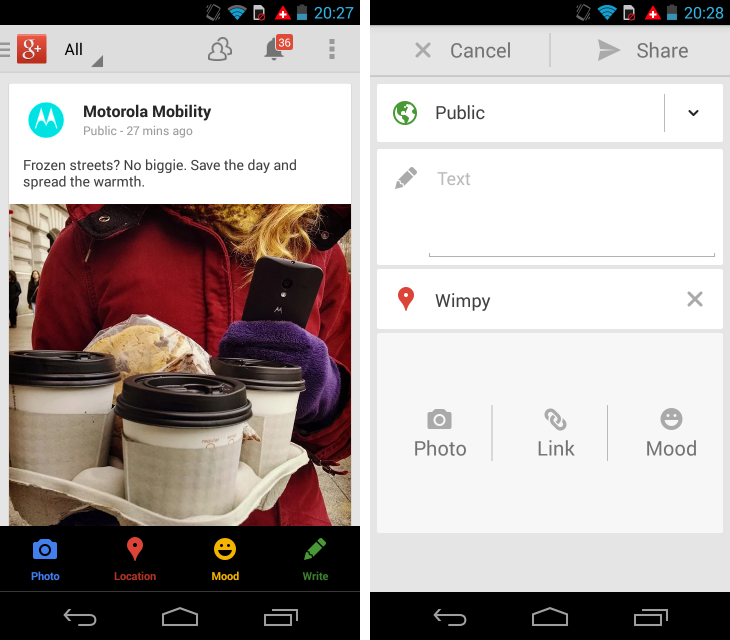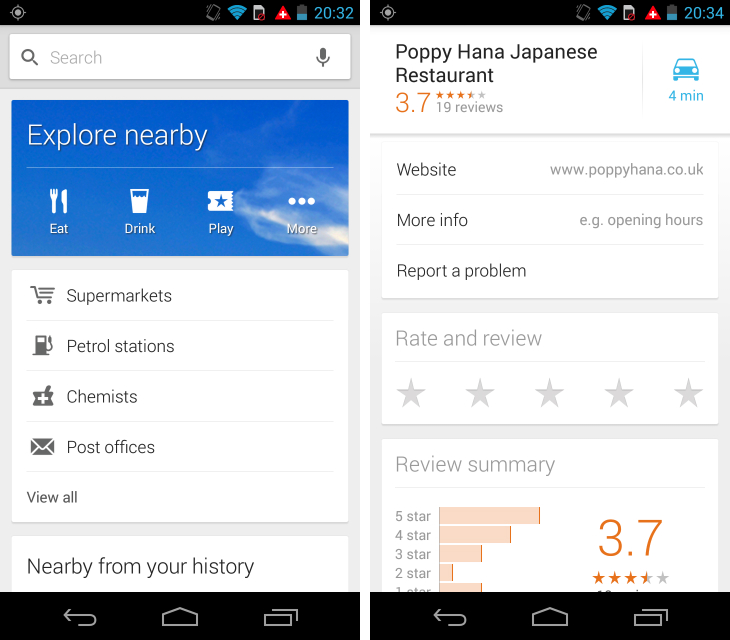
I’m yet to find a service that can match Foursquare. I’ve never cared for the badges, but the idea of sharing my location with friends and then receiving recommendations based on my preferences is awfully appealing.
Google+ Local is a similar proposition, but I’ve never been compelled to switch, or use it in conjunction with Foursquare.
I have over 200 users circled on Google+ (some of whom are Google employees) but few of them talk about the service or appear to use it on a regular basis. Admittedly, that could be because they’re choosing to share that information with a private circle, but I sense that my experience isn’t unusual.
Traction is clearly part of the problem. Many of my closest friends and colleagues still love Foursquare, but few of them use Google+ regularly. The situation is improving, but it’s still disheartening to share tips, reviews or check-ins through Google+ Local when I know that hardly anyone will see them.
It’s too complicated
I don’t see this being a problem in the long-term, however. Google is taking the social footprint of Google+ into all of its other products and services, which should lead to new users and better awareness of the platform.
Of greater concern is the scattershot execution of Google+ Local.
I’ll take you through some of the user experience. From the Google+ mobile app, you can post a new check-in with the red ‘location’ icon at the bottom of the screen. Yet on the Web, this option isn’t available when you create a new post.
Instead, you can enable location sharing by ticking the appropriate box in the settings menu. This is then broken down by city and your precise location – Google lets you identify exactly which circles and users are able to see them. It’s also possible to configure these in the Google+ mobile apps.
Check-in posts are visible in the Google+ stream. Your current location is shown on your Google+ profile page. Users that turn on pinpoint location can then be tracked in the Locations tab found in the navigation menu of the Google+ mobile apps, but not on the Web.
So there are currently three types of check-in data, which are accessible in different places and only on specific platforms.
If you want a trendy new bar, cafe or restaurant to visit, you’ll need to jump across to the Google Maps app and tap the search bar at the top of the screen. Along with your recent search queries, the app has a dedicated section where you can review nearby places of interest.
Within a few taps, you can pick a destination and browse other user-submitted reviews. You can also submit a five-star rating and a review of your own, which will be potentially visible across a range of Google services, including Google+, Google Maps and Google Search. If you want to check-in too, you’ll need to jump back across to the Google+ mobile app, however.
Keeping up?
It gets worse. On the Web, you can review your check-ins and search for new places using the Local section on Google+. It has a fantastic UI and UX, but it’s not available in the Android or iOS app. Google is also pushing Zagat for reviews and location-based recommendations, which has its own site, apps and integration with Google+ Local.
Keep it simple
I love what Foursquare is doing with proactive recommendations and Google wants to do the same with Google Now. While I appreciate having a go-to place for sports results, boarding passes and reminders, it adds yet another layer to the Google+ Local experience.
By splitting its check-in, discovery and social features, Google has made it difficult for anyone to fall in love with Google+ Local. All of the features are in place, but Google has spread them out across too many services and created an inconsistent experience across key platforms.
Foursquare, in comparison, is simple. Whether you’re posting a check-in, looking for a new museum to explore, or reviewing one of its proactive recommendations, you only need to remember one app. You can jump in, grab the information that you need and quickly jump out again.
Google+ Local needs to be reworked. Simplicity is key, although that’s probably what the company intended when it closed Google Latitude and the Google+ Local for iOS app last year. While that may have been an improvement, the current situation still feels messy and unintuitive.
I don’t think I’ll be switching from Foursquare anytime soon.
Image Credit: Justin Sullivan/Getty Images
Get the TNW newsletter
Get the most important tech news in your inbox each week.







